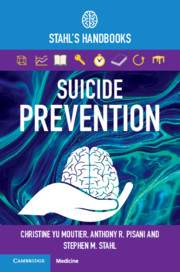Book contents
- Suicide Prevention
- Suicide Prevention
- Copyright page
- Contents
- Acknowledgements
- Section 1 Suicide Prevention Overview
- Section 2 Clinical Risk Assessment and Care
- Section 3 Special Topics: Medicolegal Considerations and Specific Populations
- 11 Medicolegal Risk Management
- 12 The Role of Culture and Societal Factors
- 13 Youth and Adolescents
- 14 Military and Veterans
- 15 Older Adults
- 16 LGBTQ Populations
- 17 Suicide Loss Survivors
- Appendix Resource List
- Index
- References
16 - LGBTQ Populations
from Section 3 - Special Topics: Medicolegal Considerations and Specific Populations
Published online by Cambridge University Press: 15 May 2021
- Suicide Prevention
- Suicide Prevention
- Copyright page
- Contents
- Acknowledgements
- Section 1 Suicide Prevention Overview
- Section 2 Clinical Risk Assessment and Care
- Section 3 Special Topics: Medicolegal Considerations and Specific Populations
- 11 Medicolegal Risk Management
- 12 The Role of Culture and Societal Factors
- 13 Youth and Adolescents
- 14 Military and Veterans
- 15 Older Adults
- 16 LGBTQ Populations
- 17 Suicide Loss Survivors
- Appendix Resource List
- Index
- References
Summary
In recent years in the USA, UK, and many other areas around the world, awareness of suicide risk in LGBTQ youth as well as across the lifespan has increased considerably. While these advances are critically important, stigma reduction occurs at different paces, unevenly around the world, and, even within small communities, widely varying attitudes exist. Therefore, while progress has been profound in many places, there is much work still to be done to eradicate stigma.
- Type
- Chapter
- Information
- Suicide PreventionStahl's Handbooks, pp. 254 - 260Publisher: Cambridge University PressPrint publication year: 2021



